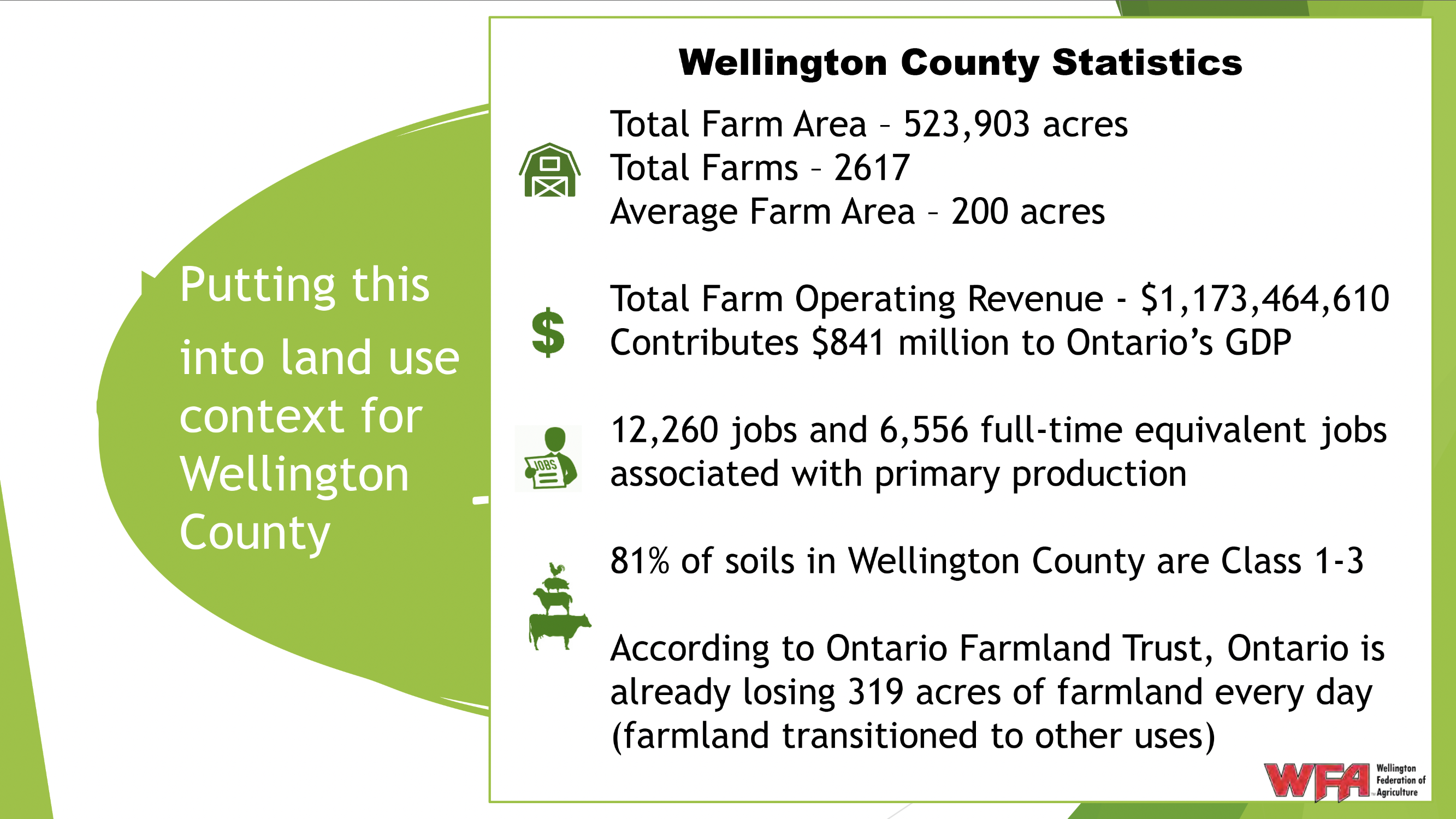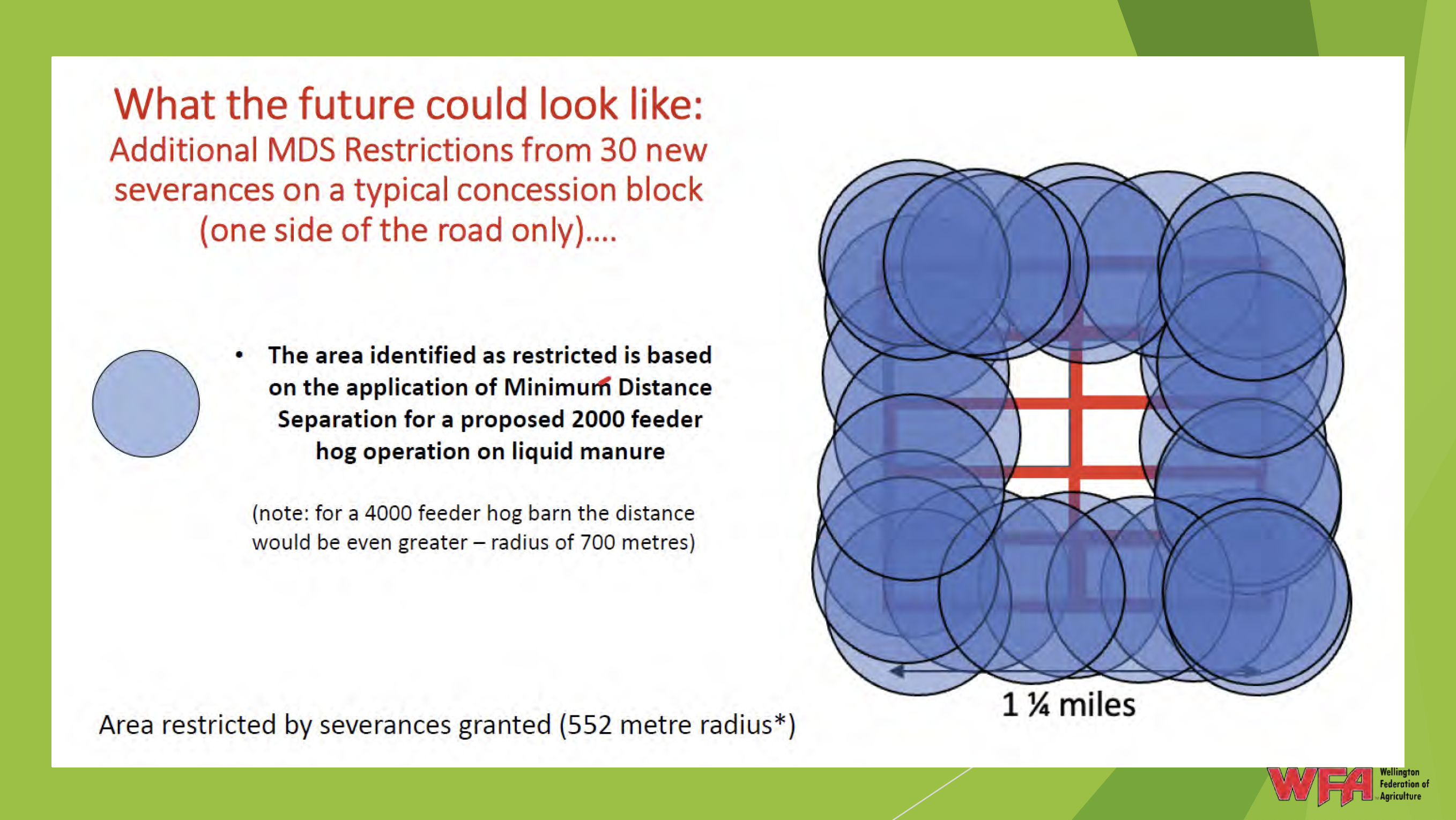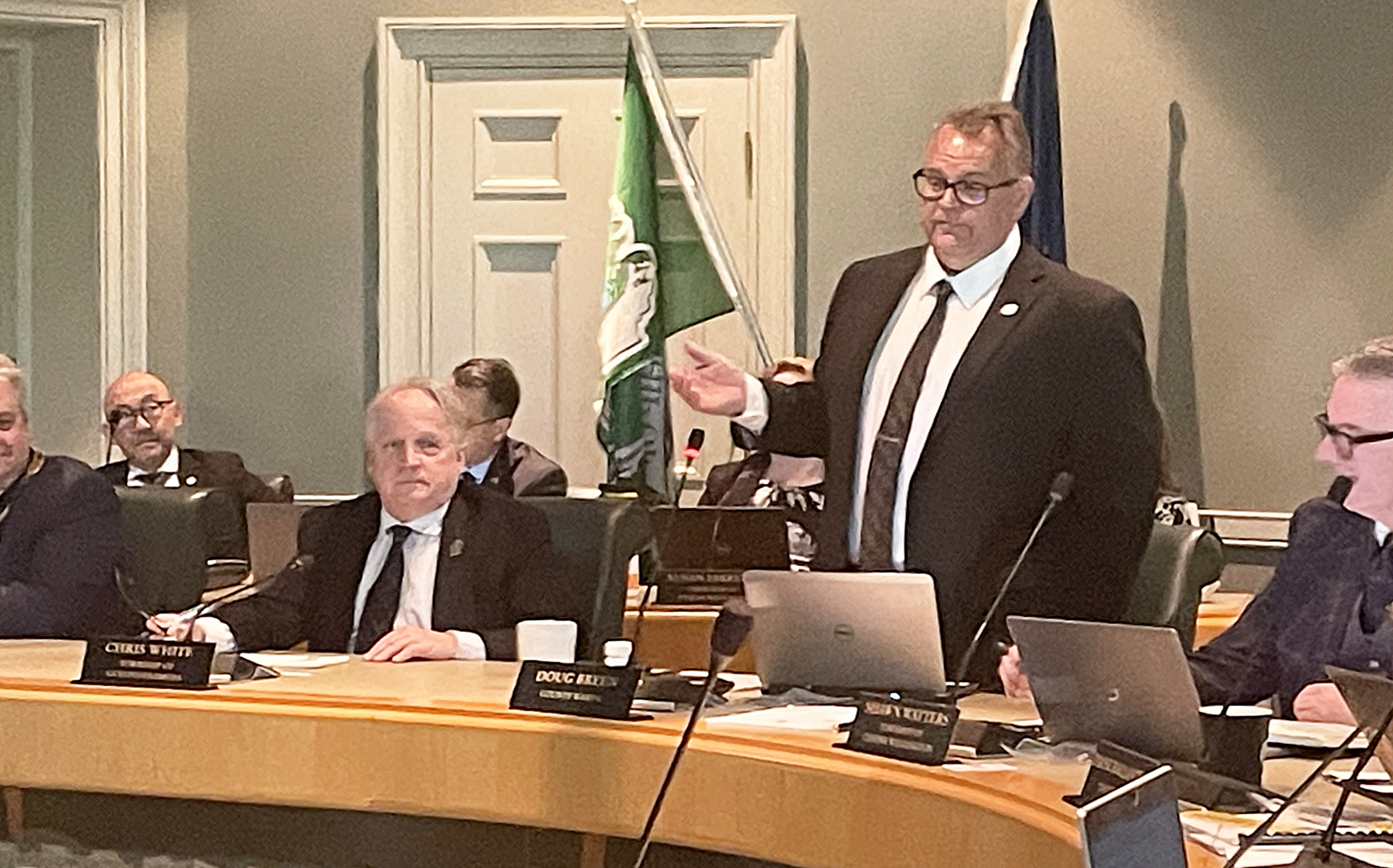GUELPH – “Is this the beginning of the end of animal agriculture in Wellington County?”
That’s the question posed by Wellington Federation of Agriculture (WFA) president Janet Harrop during a May 25 delegation to Wellington County council on proposed changes to provincial planning policy.
Harrop told council proposed policies allowing increased residential development in agricultural zones could severely limit the ability of livestock farmers to build new barns due to minimum distance separation (MDS) regulations.
“The most alarming for agriculture is the allowance of three new residential lots per farm,” she stated.
“This has kind of come out of nowhere. There hasn’t been any consultation or discussions with the farm organizations.
“So we were all very blindsided by this.”
On a parcel of land where agriculture is the primary use, the province is proposing to allow up to three lot severances, with up to three residential units allowed on each.
Under the proposed legislation, the additional residential units must be “subordinate to” a primary residence.
Wellington County manager of planning policy Sarah Wilhelm told the Advertiser the three units could be comprised, for example, of a house with an apartment and another apartment over a garage.
However, she added, additional units could be “in a separate building” from the main residence.
The residential units created in this fashion must comply with the minimum distance separation formula and requirements for provision of water and wastewater services.
Despite those limiting factors, the WFA fears a major loss of farmland due to the proposed new policies.
Figures provided by the association show Wellington County has 2,617 farms on 523,903 total acres, with an average farm size pegged at 200 acres.
If three one-acre lots were to be severed from each farm, the total farmland loss would be 27,478 acres, many times the 1,000 acres of county farmland the province has already moved into urban boundaries in Fergus, Elora, Salem, Rockwood and Clifford through its recent unilateral modifications to the county’s Official Plan Amendment 119.
If the residential cap of three units was maxed out on each lot, the possibility exists for more than 82,000 dwellings on mostly prime agricultural land.
Harrop said the potential amount of lost farmland is not limited to just the acreage converted to housing.
“The impact to farmland loss is much larger because, with virtually all primary agricultural land exposed to many residents, the related MDS impacts are significant,” she explained.
“It will also impact farms in many ways, ranging from land values due to speculation, possible trespassing from people who seem to think farmland is green space, road safety and concerns about odour, dust and noise.”
The proposed changes represent a departure from existing provincial policy, which emphasizes intensification in urban areas over rural residential development.
Harrop said a recent WFA cost-of-community-services study shows clearly that residential lots in rural areas cost a municipality more than the tax revenue received to provide residential services.
“The most cost-effective way of providing services is to have increased density and housing concentration,” she stated.
Harrop told council that additional building lots in rural communities will come at a cost to everyone.
“The farmer’s ability to farm will disappear, (as will) the municipality’s and county’s ability to provide infrastructure and services.”
In addition, she said urban residents’ ability to access “safe, local food,” and climate change initiatives currently happening in the county “that recognize agricultural land and technologies as the number one way to combat climate change,” will also be jeopardized.

This slide from the Wellington Federation of Agriculture presentation shows just prominent the farming industry is in Wellington County. WFA image
Harrop urged councillors and citizens to speak up about the proposed changes.
“We need all levels of government and all residents of Wellington County to strongly make comments opposing lot creation in the rural areas,” she said, noting a June 5 commenting deadline imposed by the province on the upcoming changes.
Warden Andy Lennox, who was late joining the council session due to a meeting with local members of parliament on the provincial planning proposals, noted he came away from that meeting hopeful the commenting deadline would be extended.
Centre Wellington Mayor Shawn Watters stated he recently met with Ministry of Municipal Affairs and Housing officials and expressed concerns about the impact of the changes on local agriculture.
“The intensification rates, they need to firm those up in terms of the urban areas, because they’ve sort of loosened up on those,” said Watters.
“And if we’re going to really completely try to protect our farmland, we need to intensify within our communities.
“Right now the policies that are … sort of being leaked out are going to contribute to more urban sprawl and I don’t I think anyone wants that …
“I don’t think they realize how that will really literally destroy our communities in terms of our agricultural production.”
Councillor Campbell Cork said the proposed changes sound like “utter foolishness” and asked if Harrop had an idea of what the province’s rationale could be.
Harrop said “understanding where this is coming from and speculating as to why this is happening” has her “scratching my head to understand.
“There’s so much concentration on building homes and those homes being attainable homes from an economics perspective to keep the next generation and workers in our communities.
Harrop added, “Estate lots are not attainable homes. They are very expensive homes to purchase.
“So where is this coming from? … we hear lots about the developer friends that the premier has, and no idea how much of an impact that has had, but there’s lots of backdoor discussions as to where this is coming from.”
“Clearly the goal is to create more housing,” said councillor Doug Breen.
“And it’s pretty easy to just look at all that empty space, if you have no idea what that empty space is, and say, ‘Well, there’s a spot where you build a bunch of houses cheap. It’s easy. Everybody wants to do it. they will sell really well,’” said Breen.
“But it makes absolutely no sense for many, many different reasons.”
Breen said one of the problems with rural severances is potential conflict between farmers and new rural residents.

This slide from the WFA presentation illustrates how difficult it will become for farmers to locate farm buildings and other infrastructure due to an abundance of Minimum Distance Separation requirements that would accompany nearby residential land severances. WFA image
“You have someone living out in the country who has no idea what’s going on. Living in the country seems bucolic and beautiful from a distance, but you’re basically living in an industrial park, right?” he stated.
“It’s messy, it’s smelly, it’s loud, it’s dusty, it’s all kinds of things. It’s beautiful in its own way, but farming is not what people think it is.
“And living in the country next to a farm is not what people think it’s going to be … we always have discouraged those severances for that reason.”
Taking good farmland out of production is another downside of rural severances, he added.
“You’re looking for rural Ontario, once again, to solve a problem that urban Ontario has created,” said Breen.
“Okay, we have a housing crisis – (it) has nothing to do with Wellington County. Right? It was foisted upon us.”
Breen said he has to take the province “at its word” that it is seeking consultation.
“It’s important that we get back to them with our ideas and with all the things you’ve said today,” he stated.
“The answer is density. The answer is building houses in places where farming is not, or is never going to happen.
“And those pockets do exist in rural Ontario.”
Breen said the impact on some municipalities could be massive if the changes go forward.
“There are some rural townships in the County of Wellington where you could conceivably double the population and double the number of houses if every single 100 acre farm had four houses on it,” he said.
“This is absolutely life-changing policy that we’re going to feel for generations and generations and generations if we don’t do something about it.”
He added, “We have to push back on this. We have to come back with solutions.
“We have to come back with an alternative … we can’t just say no … because people do have to live somewhere.”
Breen said farmland in this part of Ontario is superior to most other jurisdictions.
“When we look at the consistency of rainfall, the soil we’ve got to deal with, this is a purely magical spot to grow food, and we cannot let it go,” he stated to a round of applause from his fellow council members.
Mapleton Mayor Gregg Davidson pointed out that in addition to farmland, the county could lose some of its limited tree coverage to residential expansion.
“I foresee us losing some of that tree cap that we have and really, in Wellington County, we don’t have a large tree cap now,” said Davidson.
“And if we lose more of that forestation it’s going to cause some more issues when it comes to climate.”
Lennox noted county representatives had “a good discussion” with provincial officials at the meeting earlier in the day.
“I think there’s an understanding of how frustrated we are about this issue,” said Lennox.
“We did receive some information that the commenting period, particularly around the provincial planning policy statement may be extended because of the amount of concern that is being voiced around this – so stay tuned.”
Lennox added, “I think the voices need to continue to resonate … I believe we tried to drive home the message of how important this industry is to our communities and how detrimental this could be to do that and I think we tried to deliver that message this morning.
“But I think we need to continue to drive that message forward as we go.”
Council received the WFA presentation as information.




